Visiting the Cathedral of the Holy Trinity at Gibraltar I spent some quiet time admiring the architecture of this very beautiful Cathedral in August of 2001. No one else was there except a few members of the Clergy. As streams of brilliant light poured in through the remarkably shaped windows, my eyes traced the open forms of the arches high above and fell upon the manifold decorative accents located throughout the building. This particular photograph gives another view of the ornate pipe organ just above the entrance to the Cathedral, showcasing some of the magnificent detail and rich hues of the casework and pipes. The colors and shapes are magnified by rows of flags which accent the sides of the main sanctuary. One notices the memorable effects of light and shadow in a space such as this, with the high ceiling providing a natural reflection towards Heaven and an attendant call to prayer.
0 Comments
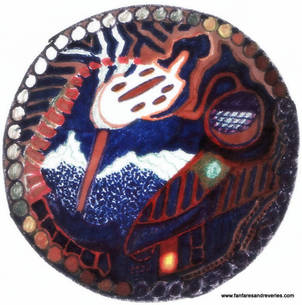 Pen & ink, 3" diameter, G. Tompkins Pen & ink, 3" diameter, G. Tompkins Journeys & Visions Along the Urban Landscape Often we encounter glimpses of things which might ordinarily escape our notice. In the 1960's I frequently traveled via the Jersey Central Railroad to Newark from the station at Dunellen on my way to New York City. As you approach the more densely populated areas, one notices a more commercial, urbanized landscape and fewer pockets of picturesque trees. Yet I distinctly remember gazing dreamily northwards from the windows of the eastward-bound train as I prepared for a day in the City. To Gauge the Map of Tracks, Trees & Hills As you approach Plainfield, there is a point somewhere in the vicinity of Leland Avenue which affords an expansive view to the north. On one eventful train trip many years ago, I just happened to casually glance in this direction and noticed a spectacular sight which I had never seen before. Just overhead from the dense pocket of trees to the north, in the distance I could discern a beautiful building shining in the early morning sun. It was on the southern side of one of the Watchung Hills, looking like a magnificent palace, a stone castle or royal chateau. As the train crosses Terrill Road, you can still see this building quite clearly, but the image fades as you edge toward Martine Avenue, eventually dropping from sight as you approach Westfield Road. This view lasts only a brief moment on the moving train, then vanishes altogether, not to be seen again until the long homeward-bound journey. A Vision Upon the Watchung Hills The beautiful building within sight of the train is known as Mount Saint Mary Academy, an independent school which offers a college preparatory program for young women, 9th through 12th grade. Situated in Watchung, just north of Plainfield along Route 22, the Academy is under the direction of the Sisters of Mercy of the Mid-Atlantic. The first building to house the Academy was erected in 1908, unfortunately destroyed by fire in 1911. The new building (the present structure) was rebuilt in 1912, featuring a prominent bell tower with the inscription "Gratias Agamus Domino Deo Nostro," (We give thanks to God). Whenever I had occasion to travel via the Jersey Central, I would earnestly look northwards to see if I could spot the bell tower and the imposing facade of this magnificent building. On certain days, if the weather was overcast and grey with slight rain or fog, you might totally miss the vision upon the hill and the grounds adjacent to the Academy. If the trees seemed to grow somewhat taller, the view could be completely cut off and suspended from sight. Sometimes you really had to search the horizon or you might miss the occasion in a matter of moments. Andante pastorale from Symphony No. 3 by Composer Carl Nielsen (1865-1931) There is a passage in this remarkable symphony (FS 60, Op. 27 "Sinfonia espansiva," composed in 1910-11) where two soloists enter the second movement and sing wordlessly in the "Ah" vowel, echoing one another and sounding profoundly beautiful together amidst the splendor of the orchestra. These two voices seemingly appear out of nowhere and rise to glorious heights of harmonious expression, drawing the listener in toward one of the most transcendent moments in all of Classical music. I find this music to be thrilling and resplendent in an all-encompassing manner, especially in the version offered by Dacapo with Michael Schonwandt conducting the Danish National Radio Symphony Orchestra. In this performance, Inger Dam-Jensen sings the soprano part and Poul Elming the tenor part, recorded in cooperation with Danmarks Radio. (This recording is also available on Naxos.) A Brief But Glorious View The second movement of Nielsen's 3rd Symphony illustrates how a moment of divine music may inspire us in an extraordinary and long-lived manner. It is just a brief interlude in the overall structure of the Symphony, a passage which Nielsen refers to as "the purest idyll." Yet this passage reflects a visionary summit peak, a moment where voices soar wordlessly over the enchantment of the symphony orchestra. It is a reminder of the art of perspective, a vital reflection of looking upward and outward and noticing something we might have previously missed. From the train to a brief vision of the mountainside Academy, from a momentary passage in music, or from the written notes of Carl Nielsen regarding his Symphony, we may each engage "...a certain expansive happiness about being able to participate in the work of life and the day and to see activity and ability manifested on all sides around us." 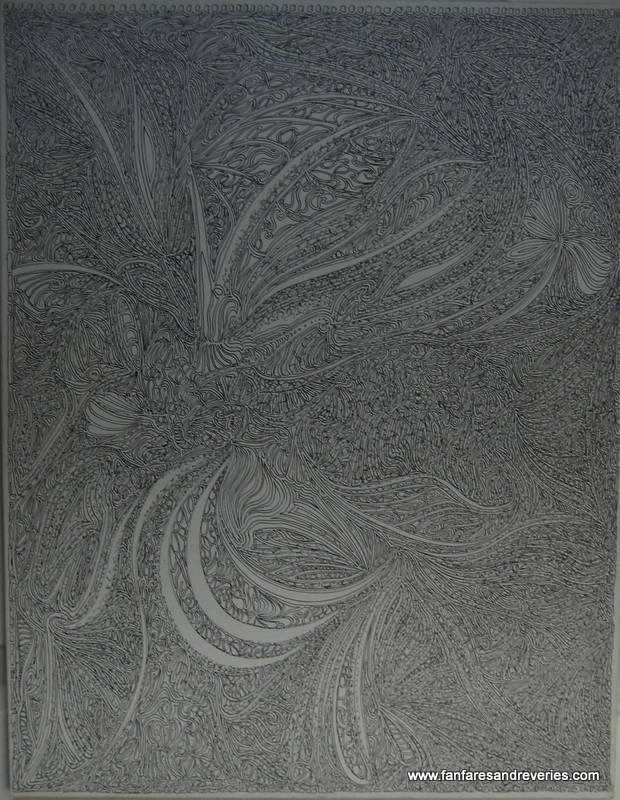 Pen & ink drawing, 15" x 19", on artist's board. Inspired by the many films and documentaries created by the noted French oceanographer, scientist, researcher & filmmaker Jacques Cousteau (1910-1997). The oceans of the world offer fabulous varieties of color, shape, form & intricate life. Artist: Glenn Tompkins 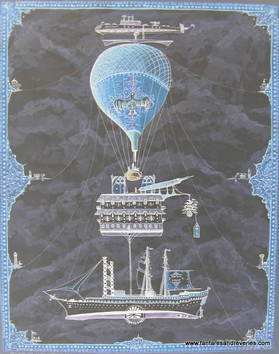 Pen & ink with watercolor, 8" x 11", G. Tompkins Pen & ink with watercolor, 8" x 11", G. Tompkins The Music of Bernard Herrmann (1911-1975) One of the special aspects to "Walking Distance" is the magnificent contribution made by composer Bernard Herrmann via his evocative musical score which accompanies Rod Serling's heartfelt, wistfully remembered story. Few thirty-minute television programs ever beheld such fabulous musical composition as the gifted passages heard throughout this neatly crafted episode of The Twilight Zone. Herrmann has long held a rather distinguished place among soundtrack composers in both film and television. In 1974 and 1975 Decca/ London Records released two blockbuster recordings on the London Phase 4 Stereo label which showcased some of Herrmann's best scores for film. "The Fantasy Film World of Bernard Herrmann" features the composer conducting the National Philharmonic Orchestra in scores from "Journey to the Center of the Earth," "The Seventh Voyage of Sinbad," "The Day the Earth Stood Still," and "Fahrenheit 451." Some interesting liner notes are provided by the composer describing his designs for each individualistic score. The second disc is entitled "The Mysterious Film World of Bernard Herrmann," again featuring the composer conducting the National Philharmonic Orchestra at Kingsway Hall, London, all offered in London's superlative Phase 4 Stereo sound. This album highlights some selections from "Mysterious Island," "Jason and the Argonauts," and "The Three Worlds of Gulliver." These two albums became sonic favorites for many audiophiles, testing the full range of the audio spectrum via high-powered amplifiers, large speakers/ monitors and fine-quality turntable, cartridge & arm combinations. A Glimpse Into the Interior of "Walking Distance" After Martin Sloan finishes his conversation with the soda fountain attendant at the drug store, the scene switches to a wistful glance upon the beautiful boulevards and sidewalks of Homewood, as a walk down the street enlivens the cherished memories of a youth spent amid idyllic surroundings. The lovely trees, lush landscaping, neatly manicured lawns and stately homes instill within Martin a longing for the past as he takes in the brilliant sunlight and notices the bicycles and barking dogs of this enchanting neighborhood. A chance meeting with a young boy playing on the street allows Martin to reminisce about his early memories, but this scene ends abruptly when the little boy says, "You're not Marty Sloan...," and then runs away oblivious of the official driver's license which Martin attempts to offer as proof of his identity. Martin then walks to the park and notices an ice cream vendor whereupon he says to a local resident "Nothing quite as good as Summer, being a kid." In a wild twist of historical imagination, Martin then sees a young man carving his initials on the wooden post of a bandstand, remembering that he did the same thing at age eleven many years ago. When Martin approaches the young man, he sees that it is really him at age 11, the same way he looked at that age. The young man runs away fearful of being caught. At this point Martin decides to re-visit his old house, the place where he grew up and where his parents once lived. He rings the bell, but his parents don't recognize him. As Martin looks through the screen door at the front of the house, one notices a grey haze, a separation between the present and the past, an unbridgeable gap of understanding between the adult Martin and the young Martin we have just met moments ago. Martin Sloan finds that he is not known in this version of Homewood, far afield from the idyllic childhood which he still cherishes and remembers from his youth. 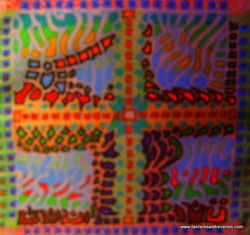 Pen & ink, 7" square. Artist: G. Tompkins Pen & ink, 7" square. Artist: G. Tompkins Rod Serling (1924-1975) One of the great writers associated with live television dramas of the 1950's was the American screenwriter, playwright and television producer Rod Serling. Serling became well known for his dramatic presentations entitled "Patterns" (1955) and "Requiem for a Heavyweight" (1956). Kraft Television Theater, Appointment with Adventure, Hallmark Hall of Fame and Playhouse 90 provided Serling with a host of opportunities to share his creative vision through the writing of highly original scripts during this fertile period. Eventual awards would include the Emmy, Hugo, Peabody and Golden Globe alongside the popular notoriety gained through the ground-breaking anthology which came to be known as "The Twilight Zone." The Twilight Zone 1959-1964 Out of a total 156 Twilight Zone episodes, Rod Serling wrote the scripts for 92 stories, altogether offering a rather impressive collection of both science fiction and fantasy elements. Each week I looked forward to watching this series and then sought out alternative interpretations or individualistic impressions from my family, friends and like-minded viewers. For the first time I sensed that television could offer the very best writing, casting, photography, set design, soundtrack music, direction and brilliance of production which normally might be associated only with motion pictures or the classic films shown at movie theaters. I still find this series to offer some highly original thoughts and thoroughly imaginative scenarios, ideas capable of stimulating the creativity of the contemporary mind. A Dimension of Sight, Sound and Imagination Serling's introduction and voice-over always begin each episode with some thought-provoking phrases, ideas or tantalizing prospects. He speaks about the vastness of space, the timelessness of infinity, the "middle ground between light & shadow, science & superstition," an area which stretches from "the pit of man's fears to the summit of his knowledge." Both the introduction and the epilogue provide a personal journey into the unknown, the fantastic, the supernatural as well as the sometimes very human elements interwoven into the science fiction/fantasy genre. I find Serling's initial and concluding comments for each episode to be a recitation of some of the most vivid, memorable and fascinating lines from the entire five seasons of "The Twilight Zone." 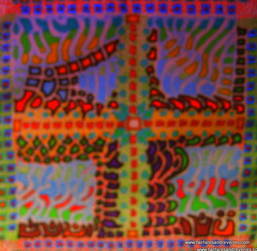 Pen & ink, 7" square, artist: G. Tompkins Pen & ink, 7" square, artist: G. Tompkins The Spectacular Sounds of the Band Organ RCA Records issued a fabulous recording of band organs in 1975, entitled "The Great French Carousel Organs," an album licensed by Erato Records of France. This recording showcases the collections of Paul Bocuse and Marc Fournier, a remarkable assortment of 9 different band organs playing a fine variety of popular tunes in a naturally splendid atmosphere. Bocuse and Fournier started their collection more than 60 years ago, carefully restoring these instruments and perfecting their mechanical integrity of performance. The results, as recorded on this album, are nothing short of phenomenal, exhibiting all the power, joy and precision of the band organ's unique textures & voices. A Splendid Sampler of Ebullient Tunes & Marvelously Preserved Instruments The Gros Orgue Gaudin performs "Perles de Cristal," "Light Cavalry Overture," "The Thieving Magpie Overture," "William Tell Overture," "Jalousie," "Under the Double Eagle," and "Ain't She Sweet." This is a very large instrument which displays the formidable sound of quite a marvelous orchestra, offering wave upon wave of musical joy, mechanical precision and splendor of memorable character. The recording also features many varieties of Limonaire, Dussaux, Lemoine and Mortier mechanical instruments, each exhibiting its own delightful sonic signature so beautifully captured by the recording engineers. The Limonaire with 66 pipes plays "Valencia" in a remarkably upbeat and exuberant manner, showcasing its rather robust sound with beautifully integrated percussive effects. The Limonaire with 56 pipes and xylophone plays a lovely version of "Rose Marie," and the Mortier performs positively dazzling versions of "Boum" and "America (from West Side Story)." Works of Art in Decoration, Wood-Carving & Colorful Ornamentation The Limonaire with 52 pipes and xylophone exhibits three carved figures standing in front of the opening to the interior woodwork, flanked by drums, cymbal, decorative panels and a light color to the paint scheme. The Mortier reveals a nice set of red drums placed in front of wooden pipes with a neat Art Deco sign overhead. The Petit Limonaire offers a lovely painting on its front facade with drums encasing a set of pipes on its rather petite frame, while the Lemoine showcases its rich chestnut stained woodwork surrounding elaborate lettering, carvings and artwork. Many of these band organs also feature gilded lettering and ornamentation, attributes which allow these instruments to shine and glow when seen in the proper atmospheric condition. 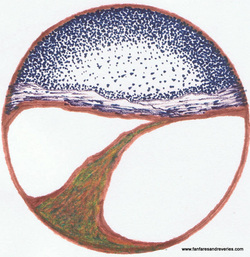 "Visions of the Landscape Along Highway 260" - image size 3 inches - color pen & ink drawing describing some of the design elements along Arizona's panoramic highways & roads. Artist: Glenn Tompkins "Visions of the Landscape Along Highway 260" - image size 3 inches - color pen & ink drawing describing some of the design elements along Arizona's panoramic highways & roads. Artist: Glenn Tompkins Highway 260 - Panoramas of Earth, Sky & Marvelous Light The highway system which connects Cottonwood with Camp Verde also exhibits wilderness tentacles stretching out toward Jerome and Page Springs, areas southwest of Sedona, Arizona. Years ago I traveled north from my home in Mesa to visit Fort Verde State Historic Park and tour the extensive beauty of this fabulous landscape. Highways 169 and 69 extend further south and west toward Prescott, once the territorial capitol of this state. On a bright and clear day, I drove along miles of Arizona highways, taking in the awesome spectacle stretched out on the open road before my very eyes. An Intriguing Panorama For the Visual Artist As I drove along Highway 260 after spending the entire day touring the area, the sky began to grow dark and the colors of the landscape subtly began to change, from vivid earth colors to subdued shadows mixed with a thousand desert/ mountain textures and hues. The night sky spread out in celestial grandeur, hovering above the palaces and hidden canyons of the Arizona landscape, like jewels upon an infinite sea. Here was a passport of observation for the traveler, a compass for the hunter, and a living map for the avid adventurer. A Poem for the Open Road and Highways of Arizona Whether as particles or waves, once light illumines the view, vision paints true perspective, a cast of ebullience & spirit renewed. Glenn Tompkins |
Author
|
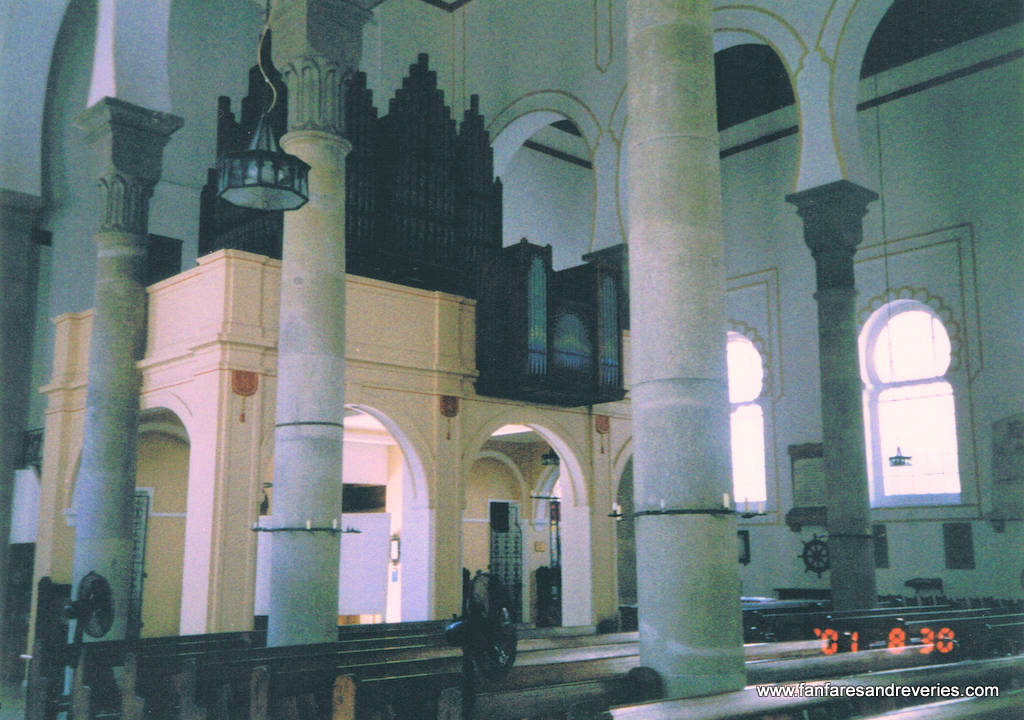
 RSS Feed
RSS Feed